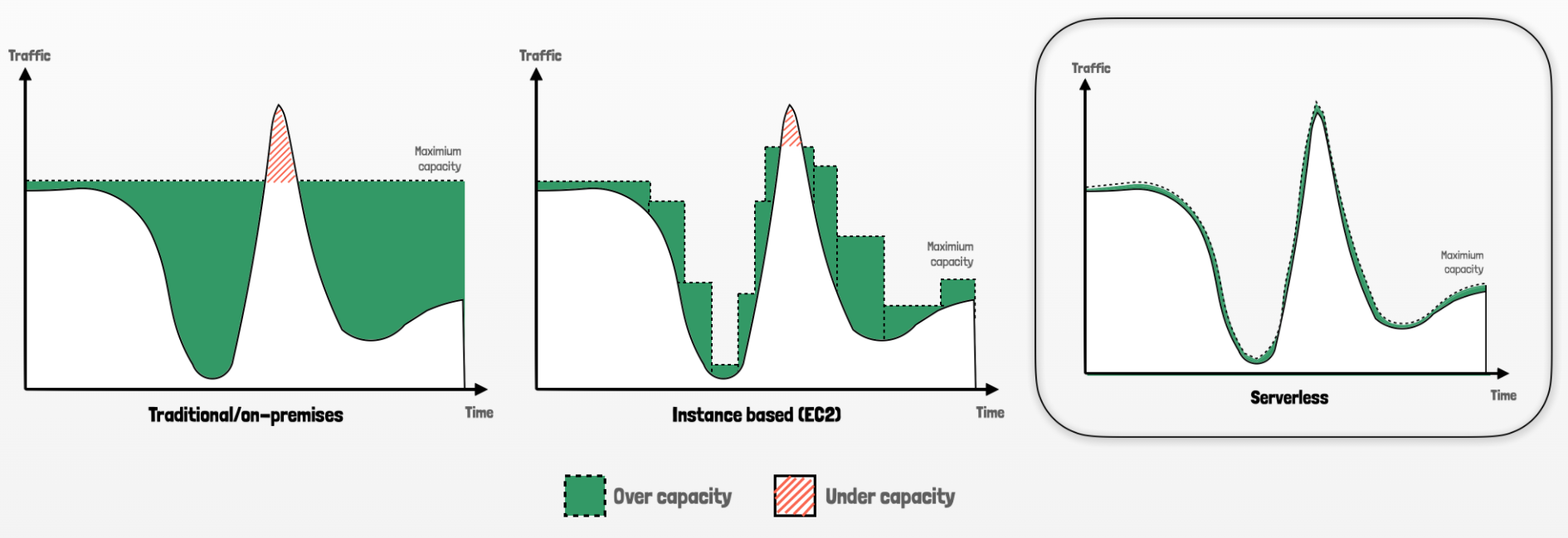Each time we present our company and our projects, we love to speak about the technologies that we use to design and develop our solutions. Hence, we often illustrate the concept of serverless and why these architectures characterise the way we approach cloud computing. We believe that
building serverless solutions is an enabling factor for new business models, leading to unique opportunities for any entity — no matter the size or the market.
The well-known benefits come mainly in the form of efficiency, performance, scalability, and security. Nonetheless, another critical factor often undervalued but highly impacted by a serverless approach to designing software is indeed sustainability.
The United Nations defined sustainable development as "meeting the needs of the present without compromising the ability of future generations to meet their own needs" (Wikipedia).
Doing our part, we have been working with sustainable technologies and solutions for six years, aligning our efforts to the assertive challenge of the Paris Agreement to achieve climate neutrality by 2050.
In this article, we would like to deepen the role that technology partners play in designing their solutions and the significance of the path on which they lead their customers.
How to achieve the sustainability goals in the cloud?
Sustainability is generally included as a non-functional factor for Solution Architects and technology enablers who, like ITER IDEA, design cloud applications for a large number of users in multiple industrial sectors. A driver that defines, for example:
- how a process is digitalised,
- the type and nature of the data exchanged in interconnected systems,
- the retention policies of documents and archives,
- the frequency and manner in which the data is read,
- the geographical localisation of the contents (to reduce latency),
- the choice of algorithms and infrastructures for a more efficient computational effort,
- and much more.
These sustainability goals also affect how manufacturers produce and constantly update processors and other hardware, aiming for higher capabilities and lower energy consumption.
However, despite these positive and undoubtedly needed efforts,
"The greenest energy is the energy we don’t use" Peter DeSantis, VP of AWS Global Infrastructure.
That is why, with their auto-scaling paradigms and advanced architectures — that avoid over-provisioning while preserving efficiency — serverless solutions generally offer the most benefits in terms of sustainability.

The graph compares the serverless strategy versus traditional on-premise workloads and cloud architectures based on classic instances. In green, the impact of oversized and unused resources, a value directly proportional to the CO2 emissions produced by the services provided.
The graph highlights another fundamental aspect, namely how, starting today,
the migration of on-premise workloads to the cloud will be increasingly crucial for achieving sustainability goals.
A recent report states that "moving on-premises workloads to AWS can lower the workload carbon footprint by 88%". Here's some of the reasons behind this evident advantage:
- a continuous optimisation of the hardware, specifically designed for each type of workload;
- a constant improvement of algorithms in managed services;
- virtualised resources shared over a large number of workloads;
- data centres built with high-efficiency standards (cooling, design, etc.);
- energy mainly supplied from renewable sources;
- etc.
The value of sustainability: a common interest
Kelly Morgan, Research Director, Datacenter Infrastructure & Managed Services, in her “Saving Energy in Europe by Using Amazon Web Services” reports:
More organisations are increasing their focus on the impact they have on the environment. [...] up from 50% in 2017.
In fact, proactivity on sustainability issues, together with the other ESG (Environmental, Social and Governance) factors, contributes to improving the reputation of a brand and strengthens the relationship with collaborators – who are statistically more motivated to work with sensitive companies (by over 86% (Pwc, Customer Intelligence Series).
Besides, European government institutions can reward particularly virtuous companies with significant tax relief.
How can environmental sustainability be measured?
Carbon Footprint is a parameter used to estimate the greenhouse gas emissions by a company for producing goods or provisioning services.
Monitoring (and demonstrating) the carbon footprint reduction is increasingly strategic and distinctive for any enterprise, regardless of size or nature.
For this reason, counting on experts in the cloud scenario becomes key to evolving IT solutions and processes in a sustainable manner. Can you count on us? Of course, we are always there for you and our planet!








